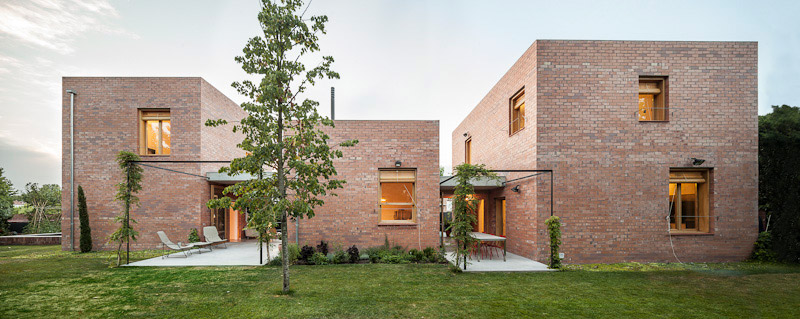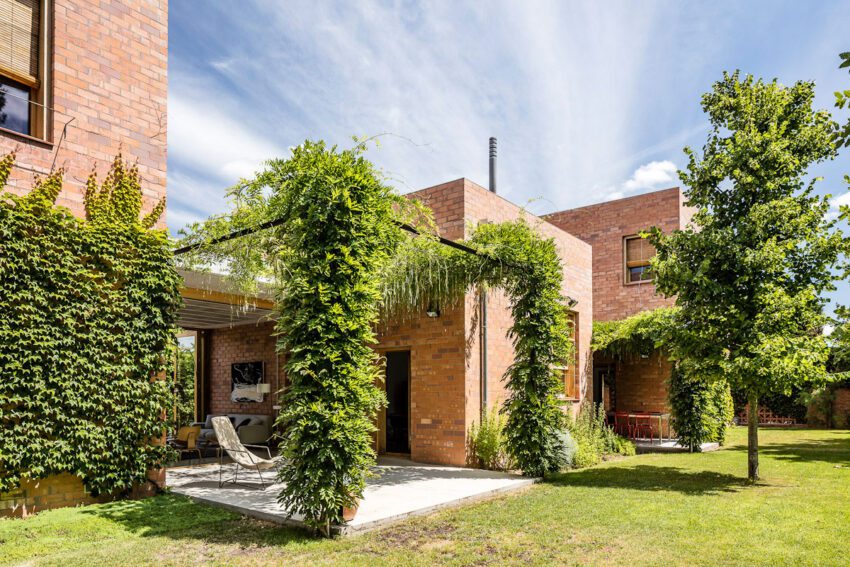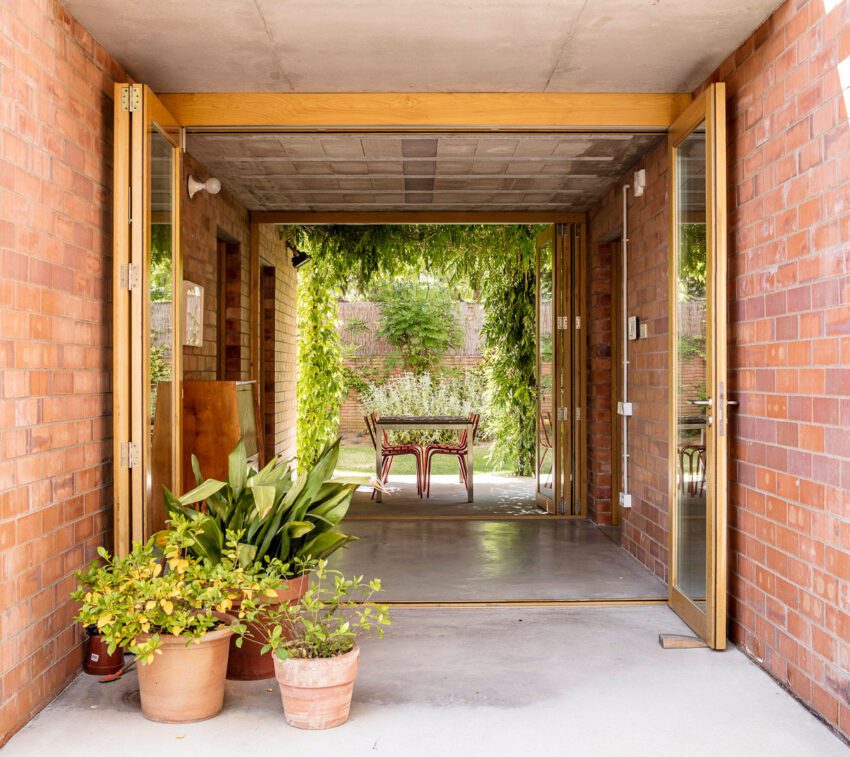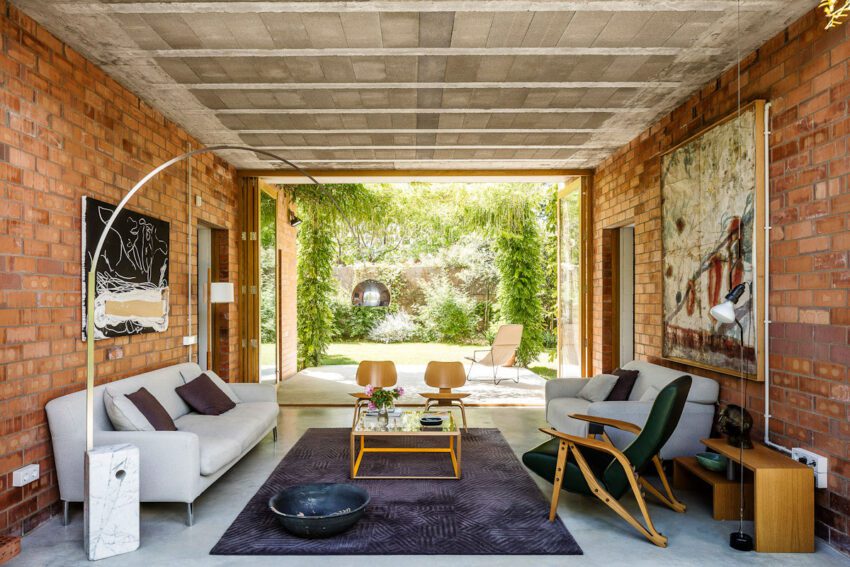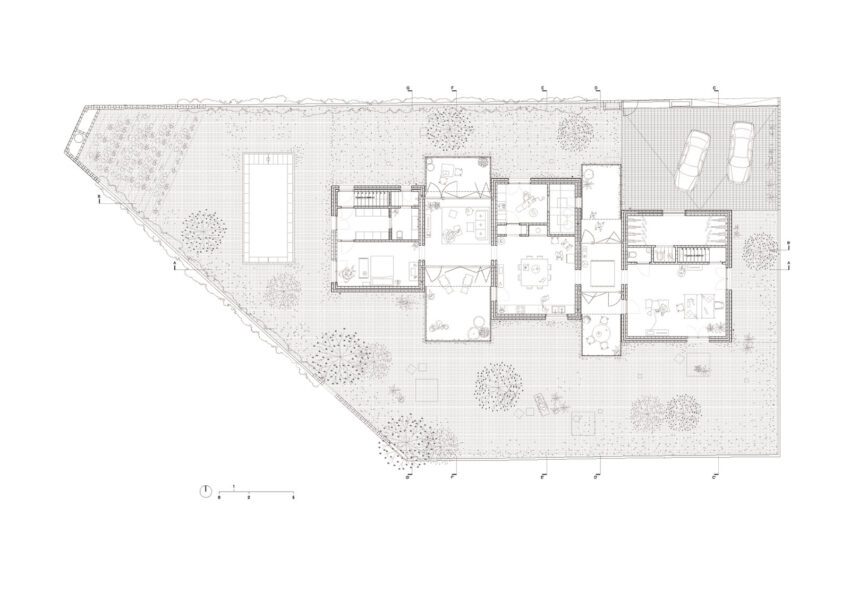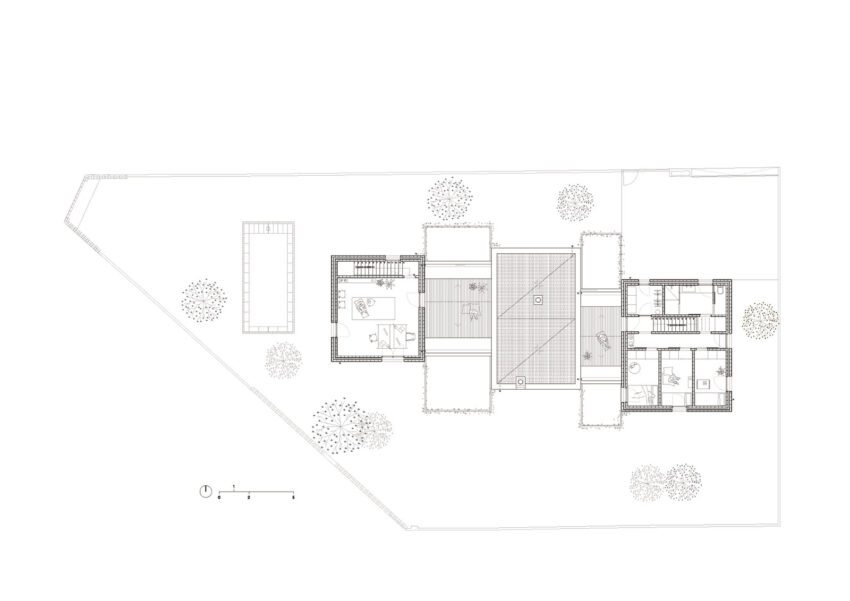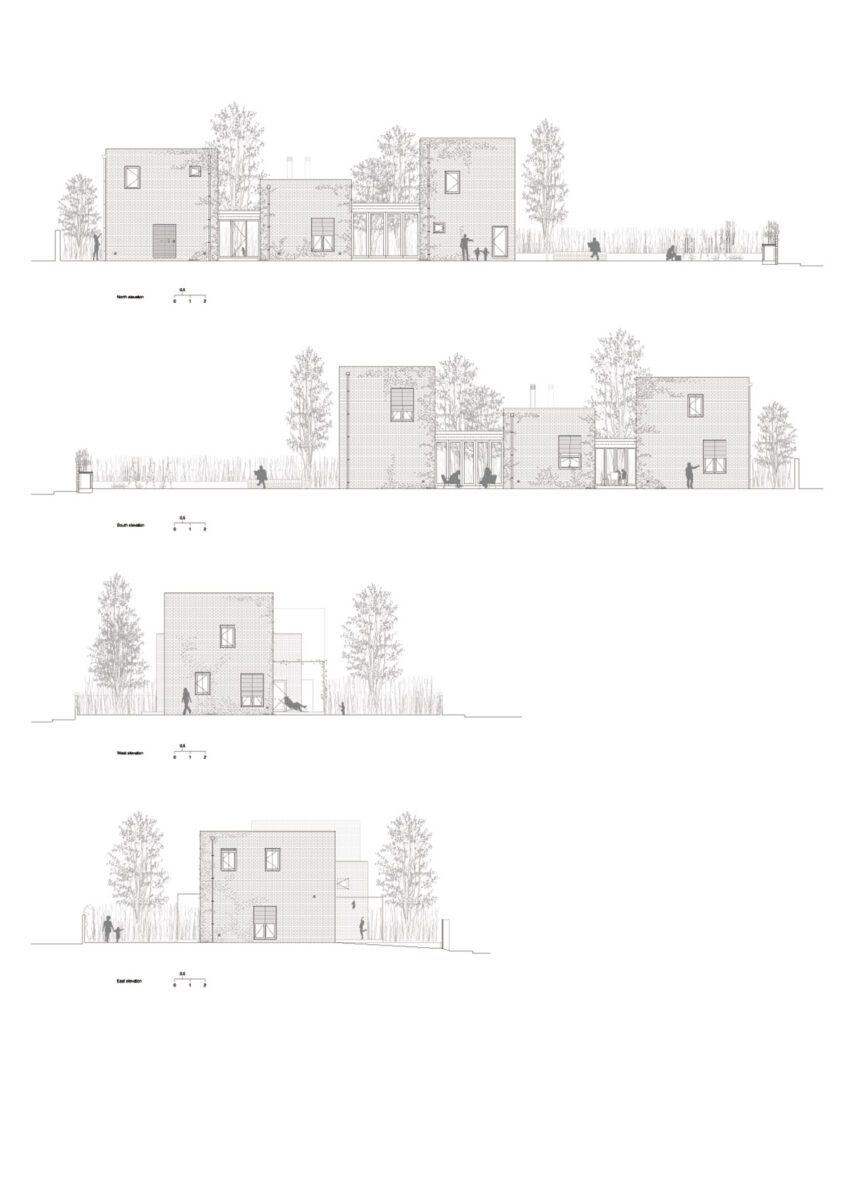Designed by HARQUITECTES, House 1101 in Sant Cugat, Barcelona epitomizes a refreshing blend of modern architecture and natural harmony. The genesis of House 1101 was uncharacteristically aligned with an architects’ dream scenario: homeowners who wanted their new home to echo the principles and values architects typically hold dear. Striving to integrate the house and garden into an organic whole, the task was both a challenge and an opportunity to push the boundaries of architectural design.
House 1101 Technical Information
- Architects1-3: HARQUITECTES
- Location: Sant Cugat del Vallès, Barcelona, Spain
- Topics: Spanish Houses
- Area: 323 m2
- Project Year: 2011 – 2013
- Photographs: © Adrià Goula
One of the main goals was to achieve a close and essential relationship between the house and the garden in such a way that they both became the extension of each other.
– HARQUITECTES
House 1101 Photographs
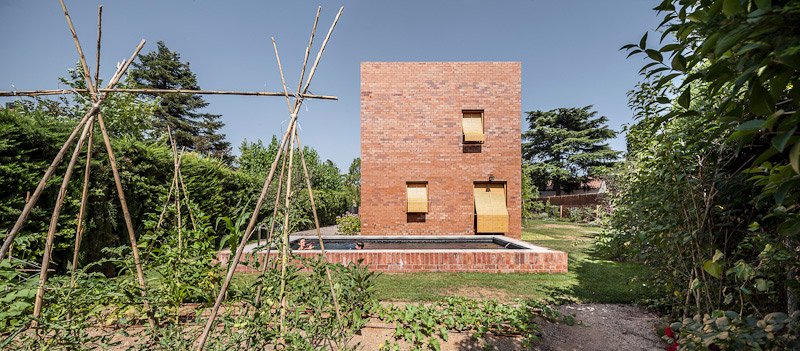
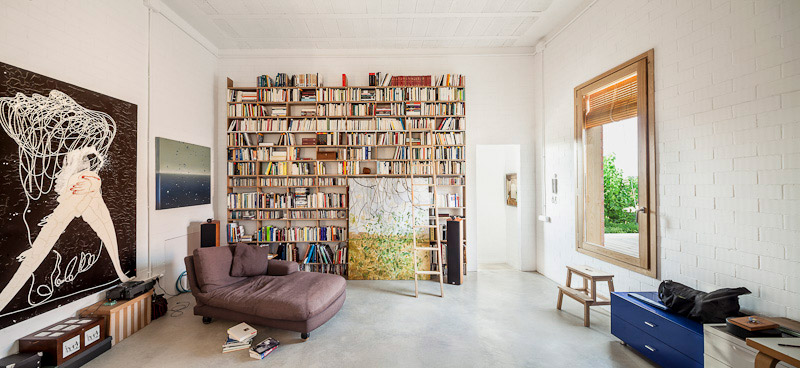

The House-Garden Interplay
The plot, located in Sant Cugat’s serene residential area, offered an appealing canvas for HARQUITECTES to bring the homeowners’ vision to life. The objective was clear: to achieve an essential connection between the house and the garden, making them extensions of one another. The architectural approach was to eschew the ubiquitous, often overbearing large glazed panels for a house with walls nestled amidst the verdant garden, a unique request from the art collector homeowners.
From the outset, the design strategy aimed at a balance: a house with as many rooms on the ground floor as possible while ensuring the garden remains undisturbed by masonry volumes. The solution was an inventive volumetric composition – three boxes spread throughout the garden, nearly aligned and strategically positioned at the northern side of the plot to create a south-facing outdoor zone. Each box houses distinct areas: the children’s quarters, the main communal room, and the parents’ sanctuary ensuring both privacy and cohesion in the living spaces.
Creating Ambience with Interstitial Spaces
Nestled between these boxes are covered spaces that create unique environments. Open to the garden; they offer an atmosphere that feels more akin to the garden than the house. These interstitial areas, functioning as the entrance hall and the living room, offer multi-seasonal appeal, serving as a greenhouse during winter and a breezy porch in summer.
Visually, House 1101 is a composition of three brick masonry cubes of varying heights positioned parallel to the back street. Despite featuring windows of multiple dimensions, the cubes maintain a solid presence. Contrarily, the interstitial areas, sheltered by a concrete slab and bordered by folding wooden glass doors, exude an airy, ethereal quality, transforming into an open porch when the windows are folded back.
Materiality and Sustainability
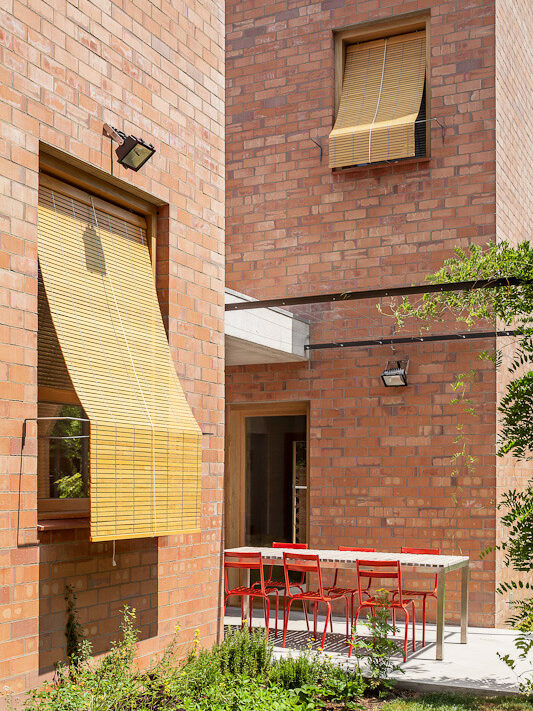
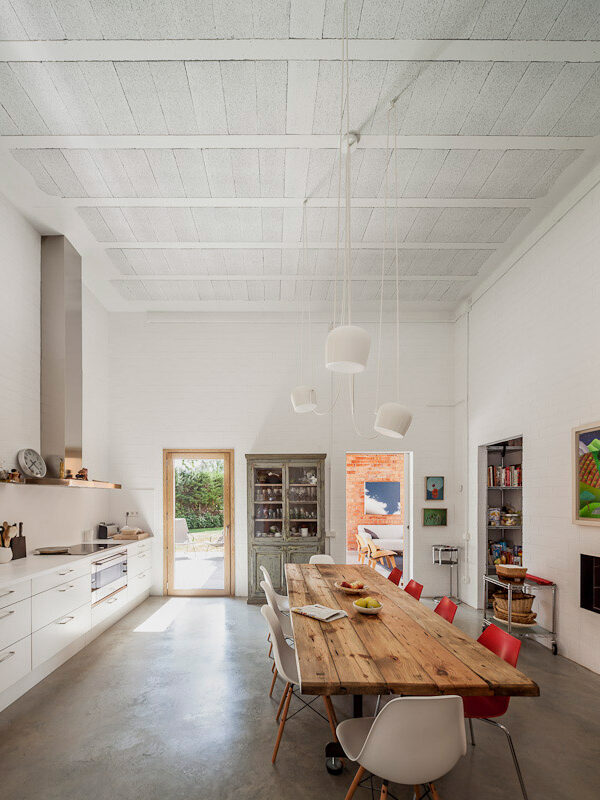
Constructed with double-face brick load-bearing walls – red masonry outside and white paint inside, House 1101 embodies a tasteful blend of materials. The design incorporates wooden windows and door frames with traditional outer roller blinds for sun protection when needed. Moreover, the house employs a sustainable climate control strategy, using a geothermal heat pump and underfloor heating system for natural cooling in summer, thereby avoiding a typical air conditioning system.
House 1101 serves as a compelling example of innovative architecture that embraces homeowner aspirations while embodying the architectural ethos of harmony with nature. Through its clever design and material use, it creates a delicate balance, manifesting as an extension of the garden and a serene sanctuary for its inhabitants.
Garden Integration and Outdoor Living
One of the key design elements in House 1101 is its seamless integration with the outdoor space. The residence is enveloped by the garden, with the majority of it facing south, allowing the homeowners to enjoy an abundance of natural light throughout the day.
The west corner, featuring a pointed design, includes a kitchen garden and a picturesque pond, providing an idyllic spot for relaxation. To the north, the house and the lush green fence are separated by a distance that varies between 5 and 6 meters, widening to 9 meters at the open car parking space. A 3-meter-wide path, running parallel to the east fence, connects this space with the main southern garden. Thus, the house’s interstitial spaces serve not only as entrance hall and living room but also as transition points between the front and back gardens, furthering the connection between the indoor and outdoor living areas.
Innovative Use of Space and Volume
When discussing the spatial arrangement of House 1101, it’s crucial to address the effective use of volumes. Despite its numerous windows that vary in size depending on their function, the three masonry cubes retain a solid, massive presence. This substantial quality is contrasted by the interstitial spaces, which are ethereal and transformable, becoming open porches when their windows are folded back.
The interplay between the house’s solidity and the translucency of the transitional spaces provides a rich, dynamic experience of moving through the home. The three boxes establish privacy and function, while the interstitial spaces invite openness and fluid interaction with the garden, demonstrating the architects’ innovative handling of space.
A noteworthy aspect of House 1101 is its commitment to sustainability and energy efficiency. The house is equipped with a geothermal heat pump and an under-floor heating system, which cools the house during summer. This ingenious solution eliminates the need for a conventional air conditioning system and reduces the house’s carbon footprint.
House 1101 Plans
House 1101 Image Gallery
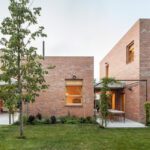
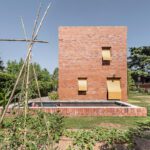
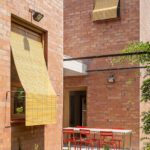
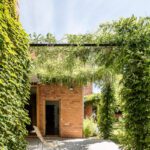


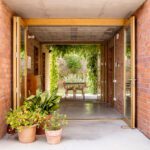

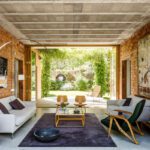
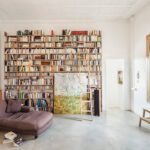
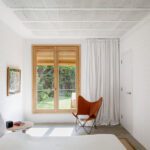


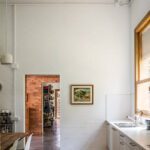
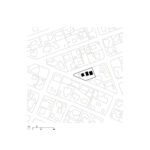
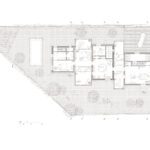


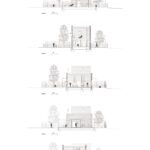
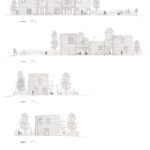
About HARQUITECTES
HARQUITECTES is an architecture firm based in Sabadell, near Barcelona, Spain. The firm was co-founded in 2000 by architects David Lorente, Josep Ricart, Xavier Ros, and Roger Tudó. Known for their innovative, sustainable, and context-responsive architectural designs, HARQUITECTES has worked on a wide range of projects, from single-family homes to educational institutions and public buildings. Their meticulous research into materials and construction techniques emphasizes sustainability and resource efficiency. This attention to detail has led to their recognition with numerous awards, and their work is extensively published.
- Principals: David Lorente, Josep Ricart, Xavier Ros, Roger Tudó
- Collaborators: Blai Cabrero, Carla Piñol
- Team: Iñaki González de Mendiguchia (Quantity Surveyor), DSM arquitectes (Structural Engineering), Àbac enginyers (Installations), Eliseu Guillamón / Pere Cabassa (Landscape)

